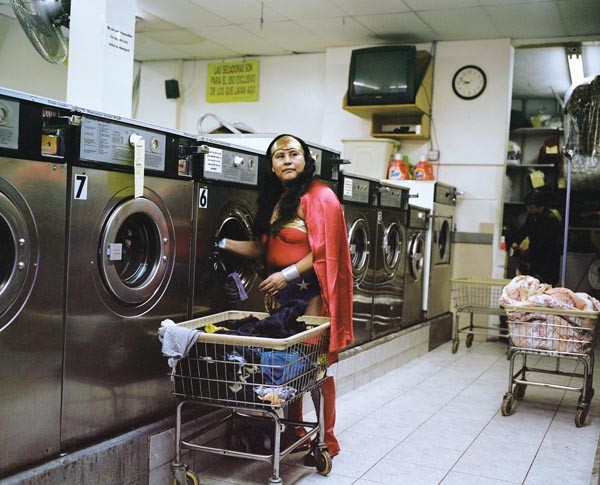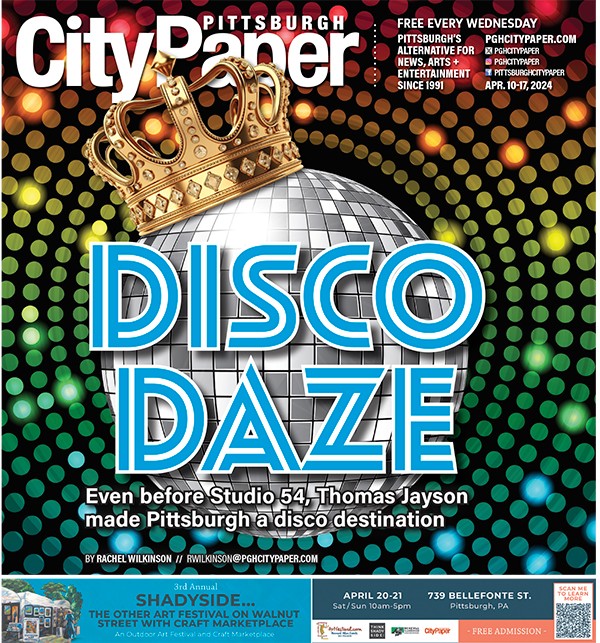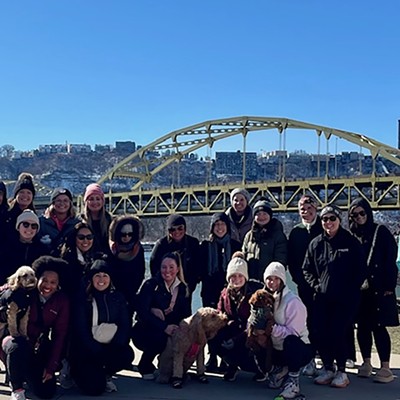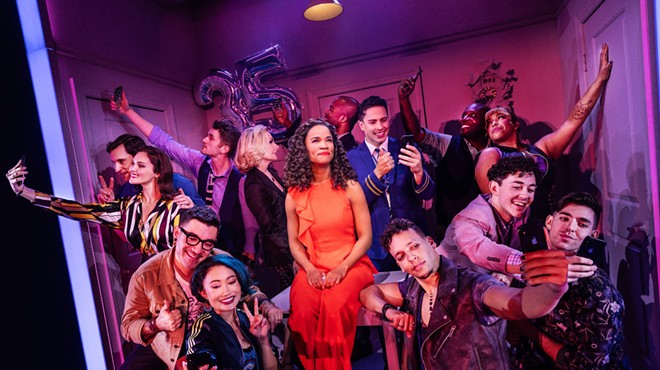Wangari Maathai, the first African woman to win the Nobel Peace Prize, dedicated her life to activism and helping women. Despite being pistol-whipped and imprisoned, she never stopped fighting. The late Maathai, who got her master's degree from the University of Pittsburgh, must have been in good company around here, because this city has had its share of troublemakers.
This type of revolutionary spirit is celebrated in the Pittsburgh Biennial -- Gertrude's/LOT, at The Andy Warhol Museum. Curated by Warhol director Eric Shiner, it presents work by 22 women who take their cue from Gertrude Stein and other forward-thinking artists and writers who have called Pittsburgh home. Aiming to challenge and provoke, this small but packed show is both idiosyncratic and stream-of-consciousness, much like Stein's writing.
Most of the exhibition is concentrated in one area, but there are also pieces in the museum's auditorium and elevator. At the entrance to the main space hangs a portrait of Gertrude Stein by Andy Warhol. Stein and Warhol were both from Pittsburgh, and both were highly innovative central figures in artistic milieus with outsized personalities. Here they act as spirit guides: In his introductory panel, Shiner explains that the exhibition is like one of Stein's salons, an "eclectic gathering" where "argument and counterargument are revealed."
By using the term "lot" in the title, Shiner cleverly sets up the dynamic of a posse or a crew. But by capitalizing it, he also offers it up for interpretation. Does he mean "Living Online Together"? Does it refer to the abject Biblical events that occurred before and after the destruction of Sodom? Or does it merely acknowledge Stein's native turf?
The most direct reference to Stein is in the work of Diane Samuels. Her pieces titled "Testimony Against Gertrude Stein" and "The Autobiography of Alice B. Toklas" are transcriptions of the original texts onto handmade paper using red and pink ink. "Family Stein #2," by Deborah Kass, also refers to Stein, but the artist's style is borrowed directly from Warhol's repetitive screen-print technique. Kass has said that Stein invented repetition and that without her "there'd be no Andy." Another direct connection is made to Warhol in Madelyn Roehrig's "Figments." Situated amidst a collection of Warhol skull paintings, this installation documents "conversations" with Warhol by the artist and other visitors to his gravesite.
Considered an abject topic in Western culture, death was a recurring theme for Warhol. Lilith Bailey-Kroll also explores the topic in her video about the yoga pose savasana, known as the "corpse pose." Aspects of life can also be taboo, particularly when associated with female body fluids. Jill Miller's "Milk Truck" is a performative piece that creates a safe space for mothers to breastfeed, while humorously chiding those who find it offensive. In "Minstrel Blood: The Greatest Show on Earth! Everything You Need Fo Yo Menstrual Show," Vanessa Louise German also employs humor to explore female experience, particularly that of African-American women. German's carnivalesque presentation, however, masks a history of misogyny and violence, a theme that also surfaces in Alisha B. Wormsley's futuristic video and in Amisha Gadani's "Cuttlefish Dress," designed to defend its wearer against attacks.
Costume as armor also shows up in works that reference superheroes. Dara Birnbaum's influential video from the late 1970s, "Technology/Transformation: Wonder Woman," appropriates imagery from the television show in order to examine feminism, stereotypes and pop-culture icons. Dulce Pinzón celebrates the everyday contributions of Mexican immigrant workers by photographing them at their work place dressed as superheroes.
Various guises turn up in other works as well. In "Easy Pieces," T. Foley uses a ventriloquist doll to give voice to crowd-sourced commentary. In her audio work "All My Girlfriends," Ayanah Moor recites profiles of women from back issues of Jet Magazine. Renee Stout embodies her fictive alter ego in "The Root Woman's Table." Carrie Schneider explores the boundaries of physical differentiation between one self and another. Eileen Lewis'children and their friends play dress-up in her photographs. And Jill Freedman's "Easter" depicts a woman in a bunny suit. But Freedman's photographs are less about presenting a certain persona than about capturing a particular place at a particular time. The photographs of LeToya Ruby Frazier do the same.
The show also includes work by Patricia Bellan-Gilen, Elise Adibi, Karen Seapker, Cara Erskine and Kim Beck. Beck recently stirred up a controversy in New York when some Manhattanites mistook her skywriting messages for terrorism … proving that today's Pittsburgh artists, like their forebears, are no strangers to debate.
PITTSBURGH BIENNIAL: GERTRUDE'S/LOT continues through Jan. 8. The Andy Warhol Museum, 117 Sandusky St., North Side. 412-237-8300 or www.thewarhol.org















